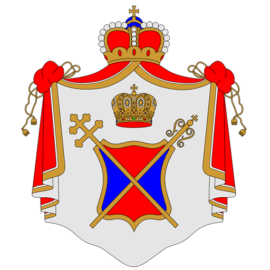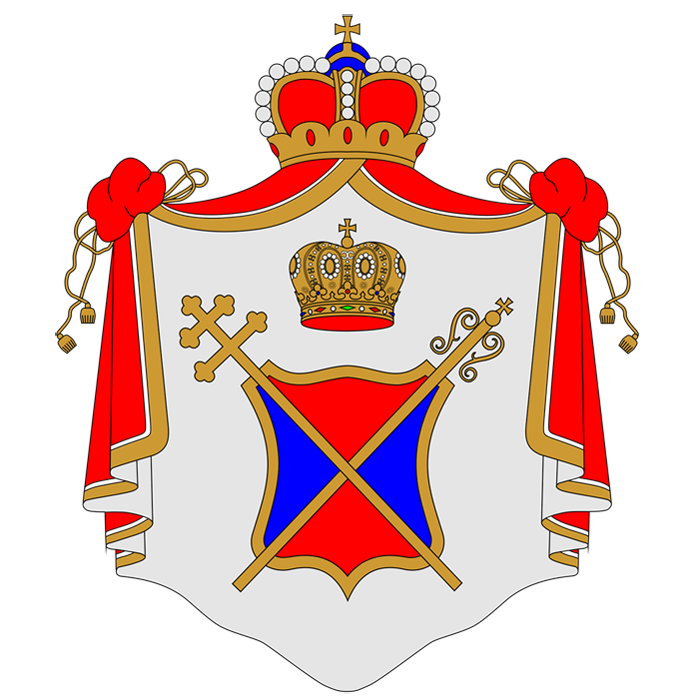Re-proposed (2014): Montenegrin orthodox church letter to United Nations OHCHR
THE UNITED NATIONS ORGANIZATION
HUMAN RIGHTS COMMITTEE
Geneva
Subject: Contribution to the Report on the situation of human rights in Montenegro;
Submitter: Montenegrin Orthodox Church, Montenegro, Cetinje, Gruda bb;
Normative basis: Covenant on Civil and Political Rights, article 2; article 3; article17, article 18; article 19; article 20; article 25; article 27;
Montenegrin Orthodox Church (MOC) emphasizes that it is under unjustified restriction of the worship and public religious observances, in the objects which, by tradition, belongs to this Church.
It situation is herited from the period between two world wars, when, without authority, by authorities misusing, MOC was incorporated into Serbian Orthodox Church. It was done by decision of the crown prince of the Kingdom of Serbs, Croats and Slovenes, prince Aleksandar Karadjordjevic, on the June 1st 1920 (published in Official Gazette SOC no. 1, year one) .
Decision was made after adoption of the decisions to abolish the State of Montenegro and to persecute Sovereign King Nikola I Petrovic. These decision was made on illegal meeting, organized by Serbian Dinasty Karadjordjevic and it’s supporters, on the December 1st 1918, in Podgorica, on the assembly called Assembly of Serbian people in Montenegro (historical name „Podgorica Assembly„).
These historical facts are important for understanding the significance of the Montenegrin Orthodox Church (MOC) because it is established in the tradition of the Eastern Orthodox Church that the church having a national prefix is consisting part of national identity. Concretly, a part of the identity of the Montenegrin nation.
Particularly important is the fact, unique in the Orthodox world, that the MOC, during the centuries of the rule of Ottoman Empire in the Balkans, successfully organized and led the fight to preserve freedom. During the fight MOC has established the identity of the nation and permanently embedded itself in this identity.
From the period of the abolition of the public exercise of the religious observances (Ancient-Early Greek autocephalous)), in 1920, the priests and followers of MOC suffered torture and persecution.
This situation lasted until October 31st October 1993, when the public exercise the Orthodox Christian observances was renewed, under direction of the Montenegrin Orthodox Church Chief Priests – Montenegrin Orthodox Metropolitan. It was done at a public meeting in Cetinje (ever since known as “folk meeting”).
At that time, MOC was not allowed to be registered in the register of religious communities, according to the Law on the Legal Status of Religious Communities (“Official Gazette of Montenegro”, no.9/77, 26/77, 29/89, 39/89, “Off. Gazette Republic of Montenegro “, no. 27/94, 36/03).
MOC submitted the first application for registration on July 26th 1995, but the request was rejected. The request was repeated on July 29th 1999 but this request was rejected, as well. Registration is done, yet, on January 17th, 2000.
By then, the registration of real estate, under the name of SOC, on the coast, Cetinje, the capital Podgorica and in all areas where there was a significant religious property (buildings and land), was over. Ownership of real estate (buildings and land of the Eastern Orthodox Church) was registered under the name of the SOC, with no evidence of, but only based on expose to public inspection. Just saying of the SOC priest that certain property belongs to the Church, was quite sufficient or the registration ownership rights under the name of SOC.
During the process of registration of property rights, the MOC was not allowed to participate in the process of registration of real estate, because the MOC was not registered with authorities.
It is important to note that SOC is not registered at the competent authority of Montenegro. Legal personality of the SOC in Montenegro was established based on the opinion of the former Republican Secretary of Legislation in 1998, but not on the basis of the Law on the Legal Status of Religious Communities in Montenegro. Based on that opinion, SOC was recognized its “special legal capacity”, a legal entity and ownership powers.
We stress that the “special legal capacity” of religious organization has not been prescribed, by any law of Montenegro, nor is it today.
Although the opinion does not bind anyone, when it comes to SOC, opinion is stronger than the law and the legal process.
On the basis of such entries of property rights, SOC forbids exercise the religious observances to the MOC priests and worshipers, in religious buildings which are registered under the name of SPC.
In the State capital – Podgorica, MOC priests perform religious observance on Sundays, only, outdoors, in the park Krusevac, next to the court church, which was built by King Nikola I Petrovic. In addition to a number of buildings in Podgorica, SOC uses this facility, as well, although, it has built a huge temple, by millions in donation, from the Government.
In the Royal Capital of Cetinje, the situation is somewhat better, because MOC has a newly built facility- the Curch of St. Peter Cetnjski, which is within the Bishop’s palace. But, the Cetinje Monastery remains under the administration of the SOC, and the Belgrade Patriarchate, which manages its Metropolitan’s Montenegrin Littoral. This is especially annoying because this object was the seat of the MOC and the state of Montenegro independence, but now it is used by church of foreign country –SOC.
In Kotor, religious service is regularly performed, but it is all too little for the needs of the MOC worshipers.
The problem is lack of resources for work of the MOC. With no legal basis, a large number of urban, rural churches and monasteries are registered under the name of the SOC, form which, Serbian Orthodox Church gains enormous un-taxed income. For example, according to the media, the Monastery of Ostrog St.Vasilije, only, annually gains between 1 million and 1.500 000€.
The SOC priests, on regular basis, prohibit access to the facilities to the MOC priests . The MOC worshipers, who manage to enter into religious object, perform worship under the supervision of the SOC priests, although religious rituals are identical.
As it is, already, mentioned, on the basis of illegal entries of property rights, SOC has tried, through court cases, to obtain restraining access to the MOC priests, but the courts rejected these claims. Despite this, the MOC priests are still banned from the access. Prohibition is being carried out by the SOC priests and they have support of the police, when needed.
Typical case is from April 18th 2007, when a special police unit prevented Chief Priests – MOC Metropolitan, along with other priests and hundreds of worshipers, to enter in Cetinje Monastery, and attempt worship and performance of observance.
The public explanation, given by heads of the police, was that “in Cetinje Monastery, there were armed, safety interesting persons from criminal structures, at that time”
On this occasion, MOC addressed to the Ombudsman and the Council for Civil Control of Police.
After several interventions, the response was obtained in March 2013, by the Council for Civil Control of Police, who said that ” all available police powers were not applied, against people from criminal structures, which, according to official police information, armed stayed in Cetinje Monastery.”The Council considered unacceptable that ,,… public in Montenegro is not aware of the identity of the persons for whom the police claimed to have criminal history … “and” considers it unacceptable that anyone in Montenegro is not subject to the application of the Law, due to “sensitive political moments or issues.”
Hereby, the powers of this Council have been exhausted. Regarding to mentioned issue, no process has been initiated yet and no response is received, by the Ombudsman.
Due to the human rights violation, from the article 18 of the Covenant, MOC addressed, repeatedly, to state authorities, but no reply was received, nor was anything done to eliminate discrimination on religious grounds and violation of the right to freedom of religion, of priests and worshipers, which has reached the dimension of mass violations.
MOC Metropolitan bowed to the victims of war in Croatia (Ovcara near Vukovar) and together with the priest of the Catholic Church in Montenegro and the priest of the Islamic religious community bowed to the victims of war in Bosnia and Herzegovina (Srebrenica), whereby he, crucially, influenced on religious tolerance in Montenegro.
Despite the fact that the SOC in Montenegro caused considerable devastation to the sacred objects-culturicide, thereof an official report of the Ministry of Culture was made in 2006, concrete actions, by means of, the SOC should has done restoration, had not been taken, nor the MOC is allowed to worship and perform religious observance, in Orthodox churches in Montenegro.
According to the Universal Periodic Report on Human Rights in Montenegro , the “Program of the Government for 2013 announced the bill on the legal status of religious communities, since the law in force of 1977 need to be harmonized with the Constitution, which will define the relations of the state towards religious communities, as well as their legal status in the secular Montenegrin society “. Despite this announcement the Government, in October 2013, gave up drafting the bill, considering this human right as ” political issue “.
MOC, on this occasion, point out that it advocates the development of Montenegro on the basis of civil state, which imply respect for human and religious rights, especially because the Montenegrin sovereignty is restored on the basis of self-determination, Article 1 of the Covenant on Civil and Political Rights. MOC requires to be allowed the exercise of worship and public religious observances, in the Orthodox church buildings, that have always been state property, since the Montenegrin church was “established church.”
Buildings and land, including cemeteries, are taken away illegally, by the government, and given to SOC. MOC requires respect for historical facts and also,for the importance of MOC to raise awareness about Montenegrin sovereignty and thus , requires its place in the development of civil, multi-religious and multicultural society.
Accordingly, MOC proposes to adopt appropriate recommendations by means of which, to its worshipers and the priests shall be allowed to exercise the right to freedom of religion, of article 18 of the Covenant on Civil and Political Rights.
With regards,
Head of Montenegro Orthodox Church
+ Mihailo
File archive info:
Office of the High Commissioner for Human Rights (OHCHR)
Changed by System Account on 1/23/2014 2:40 PM

